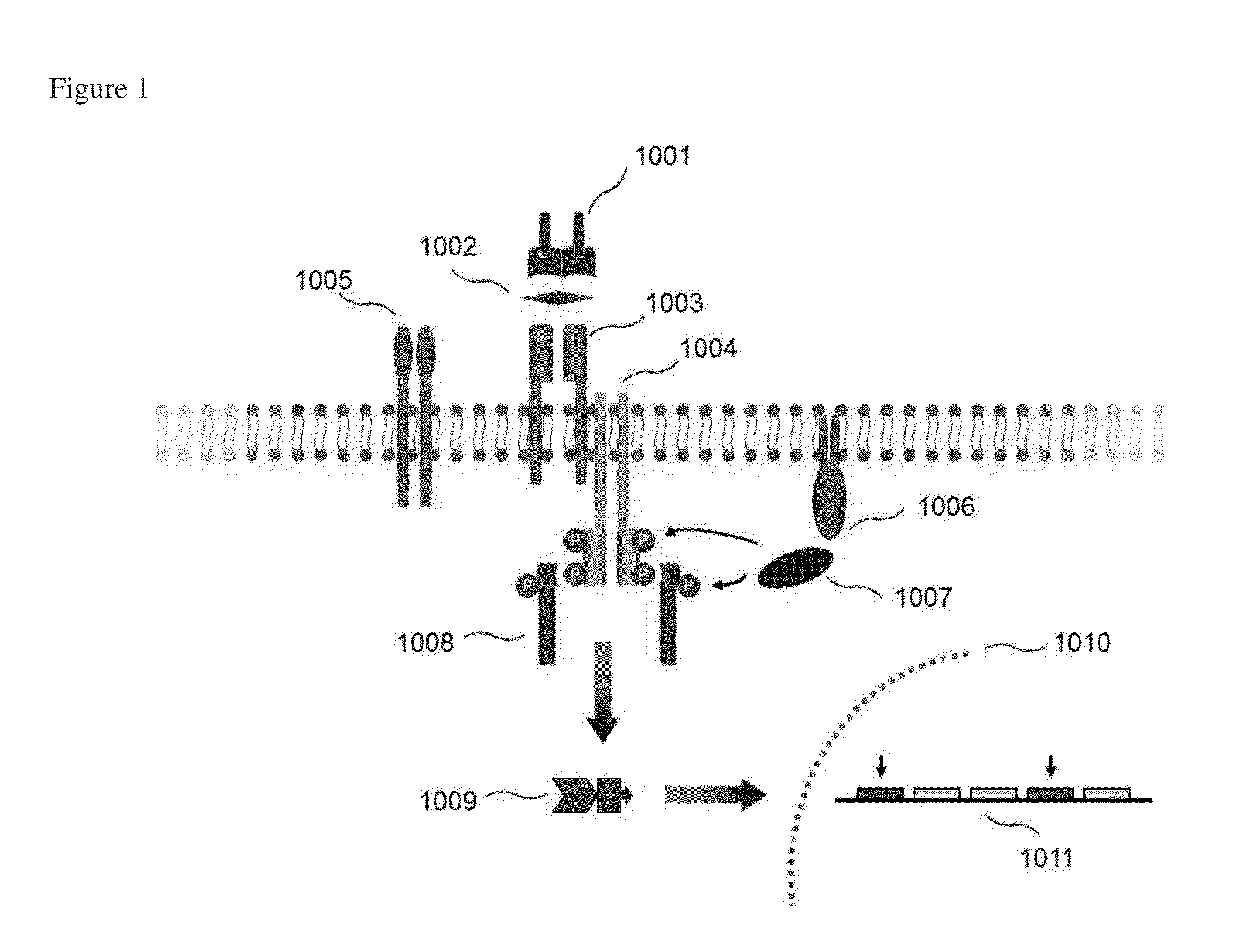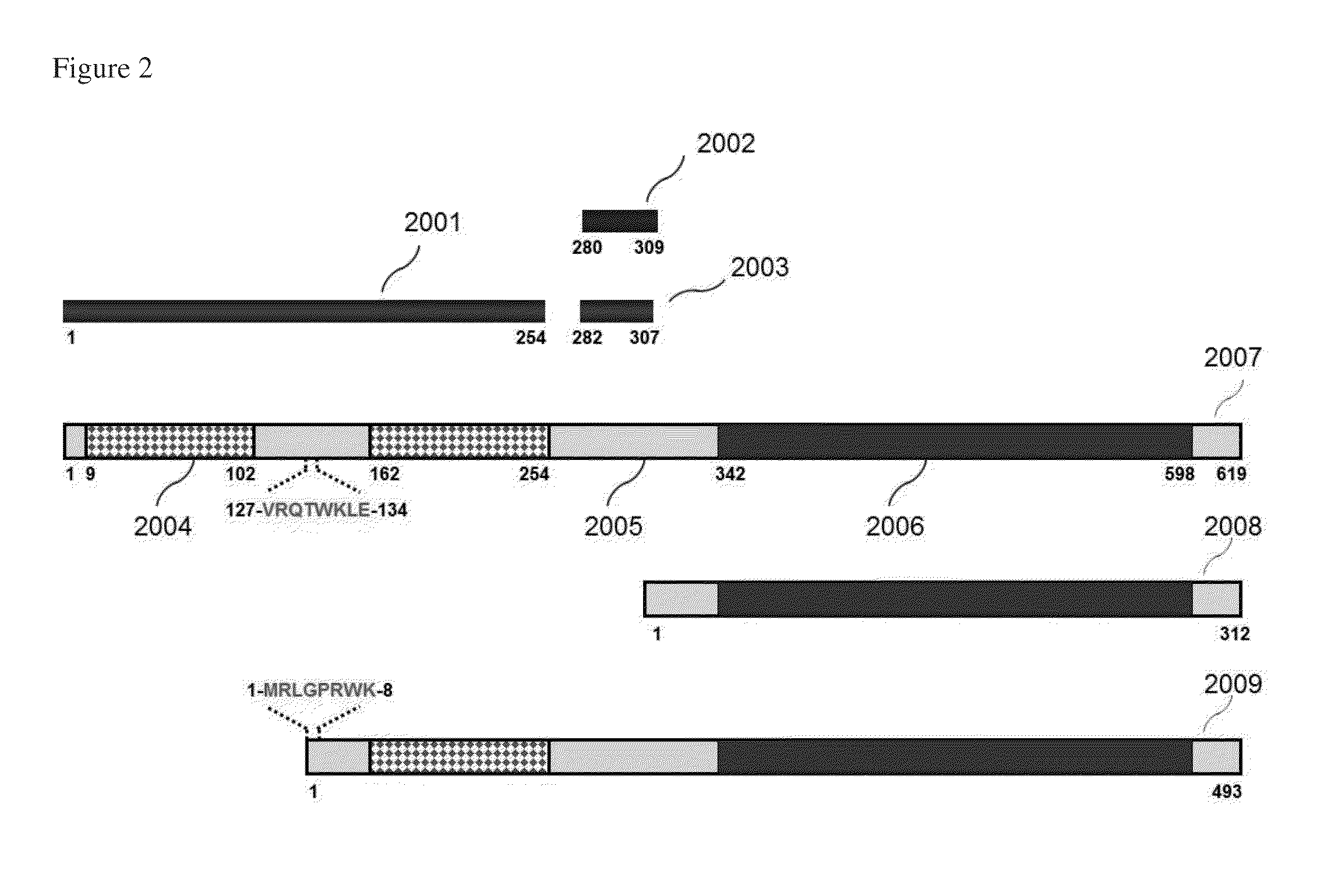Zap-70 detection in chronic lymphocytic leukemia
a lymphocytic leukemia and detection method technology, applied in the field of methods for diagnosing disease, can solve the problems of difficult to standardize the protocol of flow cytometry for detection of zap-70, difficult to establish a clear cutoff value for flow cytometry, and difficult to implement a zap-70 approach in clinical flow cytometry laboratories, etc., to achieve the elimination of multiple steps in sample pretreatment, rapid and sensitive assay, and reliable and reproducible
- Summary
- Abstract
- Description
- Claims
- Application Information
AI Technical Summary
Benefits of technology
Problems solved by technology
Method used
Image
Examples
example i
Preparations of Assay Reagents, Controls and Cell Lysates
[0104]Preparations of Positive Control, Antibodies and Reagents.
[0105]The immunoassay is based on quantitative, rather than qualitative, analysis. Improvements include use of controls of ZAP-70-positive cells (Jurkat cells) and ZAP-70-negative cells (normal B cells). In particular, purified recombinant ZAP-70 protein is included as target molecule control for validation and construction of standard curve. Human lymphocyte-derived cell lines can be obtained from the American Type Culture Collection (ATCC). One cell line, commonly used as ZAP-70 positive control, is the E6-1 clone of wild-type Jurkat cells (ATCC No. TIB-152). This cell line expresses ZAP-70 protein and serves as a positive control in the methods of the invention. The cell line was grown in the complete growth medium of RPMI-1640 according to ATCC protocols. All antibodies and reagents useful in the methods of invention are listed in Table 2. The biotinylated ant...
example ii
Selection of Antibodies and Fluorescence Dyes
[0112]Selection of Anti-ZAP-70 Antibodies.
[0113]In this experiment, three different anti-ZAP-70 monoclonal antibodies were evaluated for detection of ZAP-70 in this study (clones 2F3.2, SBZAP and 1E7.2). The locations of the immunogens used to generate these antibodies are shown in FIG. 2. The clones 2F3.2 and SBZAP were used as a capture antibody, whereas 1E7.2 was used as a detector antibody, forming two combinations of antibody pairs: 2F3.2 / 1E7.2 and SBZAP / 1E7.2. The capture antibody 2F3.2 was immobilized on the surface of magnetic beads through biotin / avidin interaction. Phycoerythrin-Cy5.5 (PE-Cy5.5)-conjugated 1E7.2 (eBioscience) was used as the detector antibody. Two ZAP-70-positive controls, Jurkat cell lysate and CLL cell lysate (P8) were tested with these antibody pairs. The results showed that antibody pair 2F3.2 / 1E7.2 produced higher fluorescence signal than antibody pair SBZAP / 1E7.2 for Jurkat cell lysate (1.6-fold) and for C...
example iii
Detection of ZAP-70 in Jurkat Cell Lysates
[0116]Detection of ZAP-70 in Jurkat Cell Lysate.
[0117]Jurkat cell lysate, the most common reference for ZAP-70, was used for evaluation of the method of the invention. To determine the detection sensitivity, two-fold serial dilutions of Jurkat cell lysate were prepared with a dilution solution (PBS containing 2% lysis buffer) to obtain final concentrations ranging from 63-1,000 cells / reaction. These serial dilutions were tested using PE-Cy5.5-conjugated detector antibody. Fluorescence signal was measured with excitation / emission wavelengths (Ex / Em) at 635 / 692 nm. Fluorescence intensity (FI) of each sample was measured with Signalyte™-II. In order to obtain a very low limit of detection, it was necessary to normalize the FI signal by subtracting the FI of a buffer control from the FI of each sample. This resulted in the normalized fluorescence intensity (NFI) of each sample. The relationship between NFI and Jurkat cell concentration is plotte...
PUM
| Property | Measurement | Unit |
|---|---|---|
| excitation angle | aaaaa | aaaaa |
| emission wavelengths | aaaaa | aaaaa |
| emission wavelengths | aaaaa | aaaaa |
Abstract
Description
Claims
Application Information
 Login to View More
Login to View More - R&D
- Intellectual Property
- Life Sciences
- Materials
- Tech Scout
- Unparalleled Data Quality
- Higher Quality Content
- 60% Fewer Hallucinations
Browse by: Latest US Patents, China's latest patents, Technical Efficacy Thesaurus, Application Domain, Technology Topic, Popular Technical Reports.
© 2025 PatSnap. All rights reserved.Legal|Privacy policy|Modern Slavery Act Transparency Statement|Sitemap|About US| Contact US: help@patsnap.com



